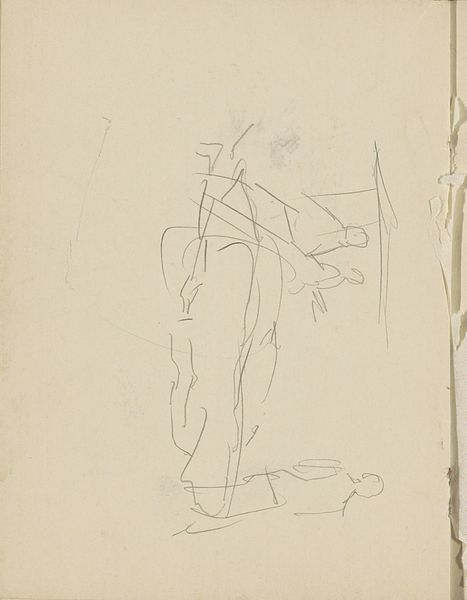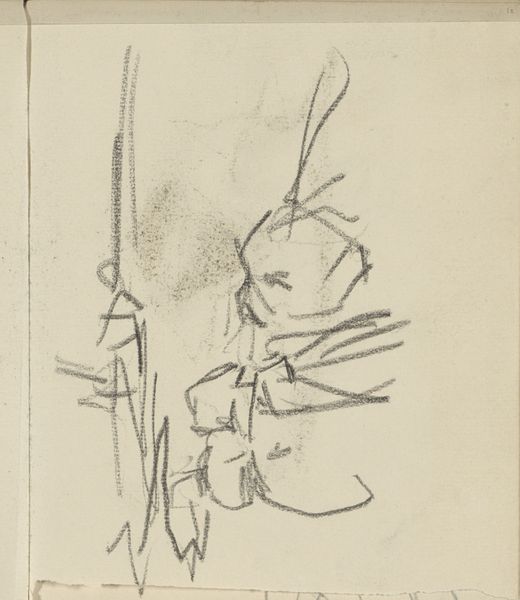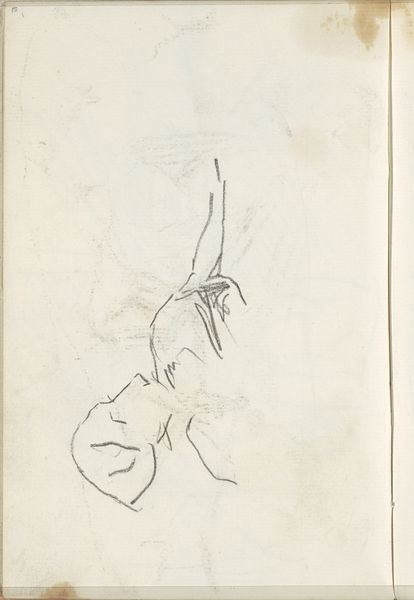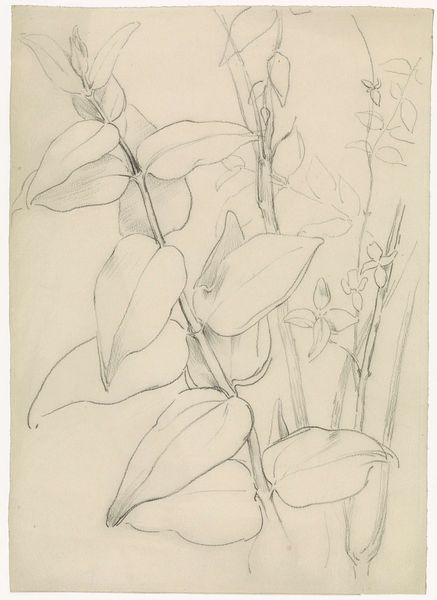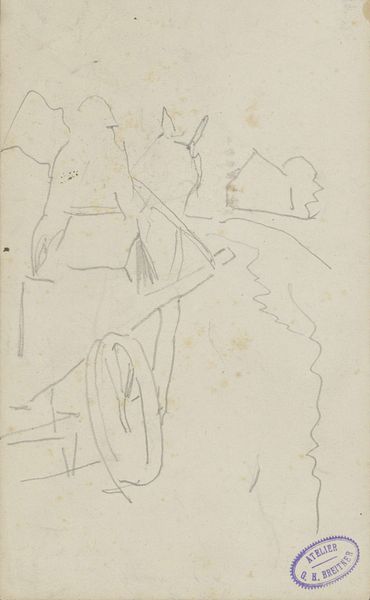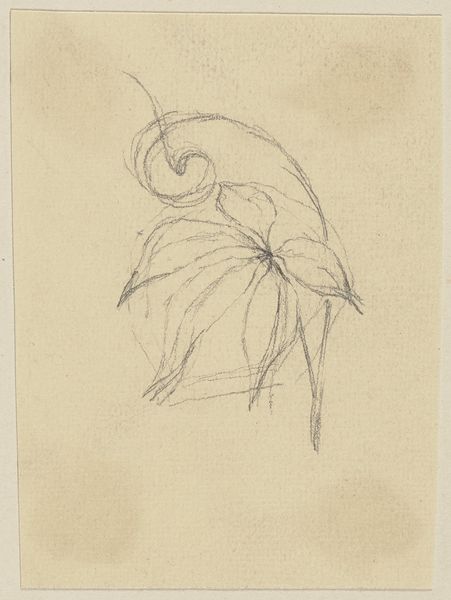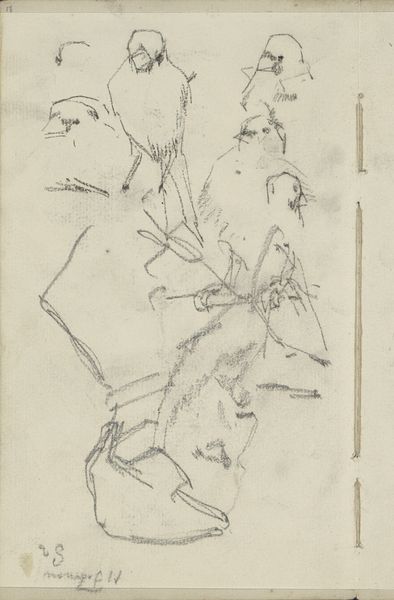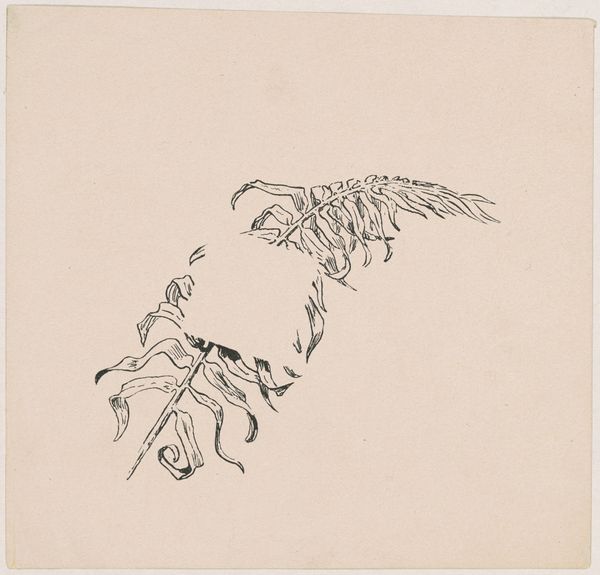
drawing, paper, ink
#
drawing
#
imaginative character sketch
#
light pencil work
#
organic
#
quirky sketch
#
paper
#
personal sketchbook
#
ink
#
idea generation sketch
#
ink drawing experimentation
#
plant
#
pen-ink sketch
#
line
#
sketchbook drawing
#
sketchbook art
#
initial sketch
Dimensions: height 200 mm, width 160 mm
Copyright: Rijks Museum: Open Domain
Editor: This ink and paper drawing, titled "Plantenstudies" or "Plant Studies," by Theo Nieuwenhuis, was created sometime between 1876 and 1951. It seems to be a simple botanical sketch. What can you tell me about it? Curator: Consider the materials. Ink, paper - readily available, relatively inexpensive. This suggests a process accessible to a broader social strata than, say, oil painting. Where would an artist even source their paper and ink? Were they making their own inks? We also need to question, how does the accessibility of these materials democratize the art-making process, challenging traditional hierarchies of artistic production? Editor: So, instead of focusing on the plant itself, we're looking at what the choice of materials tells us? Curator: Precisely. The *means* of production are central here. Think about the labor involved. Nieuwenhuis might have foraged for the plant, spent time observing and sketching it - labour. Then, he transfers this to paper, through pen and ink. This physicality links artistic creation to manual labour and raises the work to more than “high art.” Editor: That's an interesting way to look at a seemingly simple drawing. It makes me think about the environmental impact, too, considering the origin of the paper. Curator: Exactly! Consider also that even paper production involved labour - harvesting wood, pulping, processing. And the final destiny - consumption of paper! Editor: I never would have considered the "consumption" aspect of this drawing! I'm definitely going to look at art differently now.
Comments
No comments
Be the first to comment and join the conversation on the ultimate creative platform.


